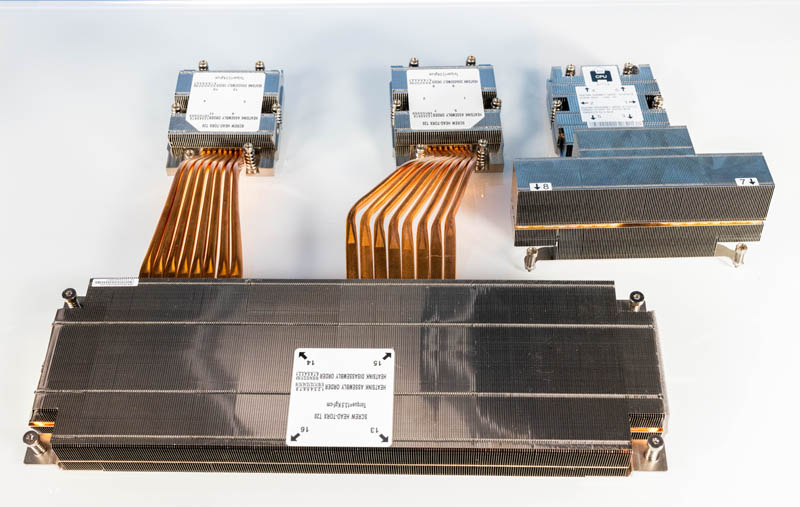During our visit to the Microsoft Azure boot at SC22, we saw a massive heatsink. While we have grown accustomed to seeing large heatsinks on accelerators, this was the heatsink on the new AMD EPYC 9004 “Genoa” processors in the server powering the Azure HBv4 line. We now have one of them for the STH YouTube set.
Massive Microsoft Azure HBv4 AMD EPYC Genoa Heatsink
As a quick backstory, Microsoft reached out after we posted Microsoft Azure at SC22 and The Enormous AMD EPYC Genoa Heatsink on HBv4 and our Best of SC22 video(see starting at 09:48 below):
Through that exchange, we were not allowed to purchase the heatsink (because then we would know the cost, but as one can imagine it is likely far less than a Genoa CPU.) The folks at Microsoft hunted down the approvals needed to send STH one for the STH YouTube set. At that point, it seemed like folks may be interested in a closer look, so that is what we have today.

Here is the heatsink:

A few stats:
- The heatsink covers both AMD socket SP5 CPUs
- There are a total of 16 heat pipes
- The heatsink itself weighs 5.7lbs
Here is a top-down view of the heatsink:

Here is a view of the bottom side of the heatsink:

Here is a view of the bottom side of the heatsink on the CPU side.

Here is a side view:

Here is a look at the massive array of fins compared to the QCT QuantaGrid single Genoa heatsink:

Here is another view of that comparison for scale.

This is enormous.
Final Words
The STH team just wants to say thank you to the folks at Microsoft Azure for getting this. It is awesome to get to see some of the cloud hardware. If you want to learn more about the Azure HBv4 instance, you can take a look here. The HBv4 is the company’s high-performance computing offering that today uses the AMD EPYC 9004 “Genoa” processor. Microsoft has already said that these instances will be upgraded to “Genoa-X” with 3D V-Cache like Milan-X when the instances hit general availability. Microsoft has been working hard to make cloud supercomputing a reality with technologies like high-end processors, accelerators, and even Infiniband. As this heatsink shows, the company is not just buying off-the-shelf servers, it is investing in hardware innovations to make compute more efficient and sustainable.





Pretty sure these are OEM’d from Cool Master. Steve over at Gamer’s Nexus was playing around with one of them in their recent Cool Mayer tour in Tawain. That heat sink pops up at 12:52 in their video.
@Kevin – Do you recall the title of the video? They seem to have a number of tour vids, and I’m struggling to find the correct one.
“During our visit to the Microsoft Azure boot”
Looks like you forgot an H there.
@Defiler
“Prototype PSU, Cases, & PC Parts (Cool Master HQ)”